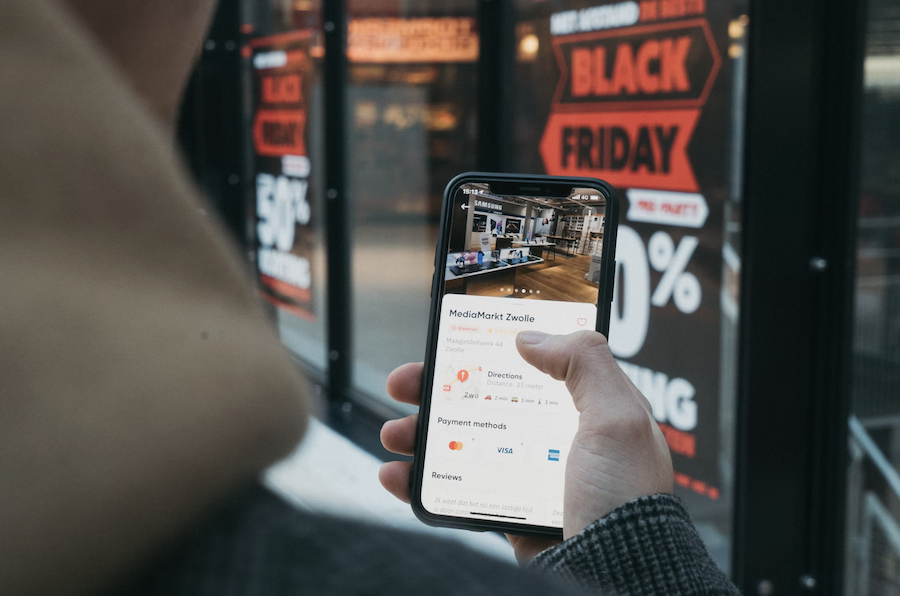
If you’ve ever felt suspicious staring at a “doorbuster” Black Friday deal that seems too good to be true, you might be right. Every year, millions of Americans get swept up in the excitement of big sales, only to realize that some “bargains” are just smoke and mirrors. So before you reach for your wallet this Black Friday, let’s uncover the clever pricing tricks that could be costing you more than you think.
The Black Friday mirage: Are those discounts real?
It’s a scene as familiar as pumpkin pie in November: you walk into a big-box store, see a shiny “Black Friday Deal” sign, and feel your heart race at the thought of saving big. But wait—what if that “sale” price is just the regular price, dressed up in a new sign?
That’s exactly what some eagle-eyed shoppers have been catching on camera. Videos circulating on social media platforms show customers peeling back Black Friday sale tags at major retailers, only to reveal the same price lurking underneath. A $649.99 TV, “marked down” for Black Friday? It turns out that it was $649.99 yesterday, too. The same goes for a $24.97 power tool at Home Depot—no real discount, just a new label.
Retailers like Target and Home Depot have responded, stating that these prices reflect ongoing sales that simply continue through Black Friday. But for many shoppers, it feels like a bait-and-switch.
The psychology behind the “deal”
So, what’s really going on here? This is where “price anchoring” comes in. This classic marketing tactic is designed to make you feel like you’re getting a steal, even when you’re not.
Here’s how it works: A retailer sets a high “original” price for a product a few weeks before Black Friday. When the big day arrives, they slap on a “sale” price that’s actually just the regular price (or only slightly lower). The high anchor price makes the “deal” look irresistible, triggering that all-too-familiar fear of missing out.
“It creates that urgency that you have to buy the deal this week or you’re never going to get it again. In reality, we’re just falling for the illusion of the deal.”
And it’s not just a hunch—recent data from Lightspeed Commerce shows that 84% of American shoppers in 2025 believe retailers inflate prices ahead of Black Friday to exaggerate discounts. That’s a lot of skepticism, and for good reason.
Source: everyrichgirlacademy / TikTok
Why retailers play this game
Black Friday is a make-or-break moment for retailers. With so much competition, stores are desperate to grab your attention and your dollars. Price anchoring is a powerful way to do just that. By making you think you’re getting a once-in-a-lifetime deal, they nudge you to buy now and think later.
But as Dax Dasilva, CEO of Lightspeed Commerce, points out, the tide may be turning. “Consumers are buying fast and deciding later, so it’s up to retailers to guide that journey. The best way to do that is with clarity—showing what discounts really mean, being upfront about fit and product details, and keeping customers informed on delivery and stock. In a tight economy, transparency is the strongest sales strategy retailers have.”
Also read: The post-holiday shopping trick that smart seniors are using to make their money go further
How to outsmart the price anchoring trick
Don’t let the marketing smoke and mirrors get the best of you this year. Here are our top tips for making sure you’re getting a real deal, not just a recycled price tag:
1. Start Early, Shop Smart
Don’t wait until Black Friday itself. Many retailers start rolling out deals weeks in advance. Track prices on items you want so you know what’s a real discount and what’s just hype.
2. Compare Across Multiple Stores
Use price comparison websites and apps to check if that “sale” price is actually lower than what’s been offered in the past. CamelCamelCamel, Honey, and Google Shopping are your friends.
3. Check the Fine Print
Look for the original price history. Some websites and browser extensions can show you how prices have changed over time.
4. Shop Online for Transparency
Online retailers often offer more transparent pricing, allowing you to easily compare prices across multiple stores without leaving your couch (or your cozy slippers).
5. Join Loyalty Programs
Sometimes the best deals are reserved for members. Sign up for loyalty programs in advance to receive early access and exclusive discounts.
Also read: Beware: Uncover the sneaky psychological tricks restaurants use to empty your wallet
6. Stick to Your Budget
It’s easy to get swept up in the excitement. Make a list, set a spending limit, and don’t let flashy signs steer you off course.
7. Know the Return Policy
Before making a purchase, check the store’s return policy. Some Black Friday deals are final sale, and you don’t want to be stuck with buyer’s remorse.
8. Use Social Media for Real-Time Deals
Follow your favorite brands and deal-hunting influencers on social media platforms to stay informed about the latest deals. Sometimes, the best offers are shared in real time.
As more shoppers wise up to these pricing tricks, retailers may be forced to change their ways. Until then, knowledge is your best defense. Don’t let a flashy sign or a ticking clock pressure you into a purchase that isn’t truly a bargain.
Read next:
- Seniors, keep your holidays bright (and your budget intact) with these 5 insider tips!
- From fix-up to fleece: The dirty tactics of home repair cons and how to spot them
- Beware this holiday season: Scammers are impersonating your loved ones—and they sound just like them
Have you ever caught a retailer using the “anchoring” trick? Do you have a favorite strategy for spotting genuine deals? Or maybe you’ve scored a Black Friday win you’re proud of? Share your stories, tips, and questions in the comments below. Let’s help each other shop smarter this season!






